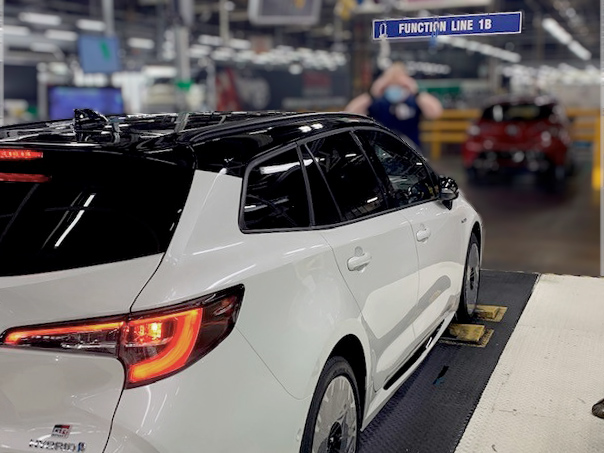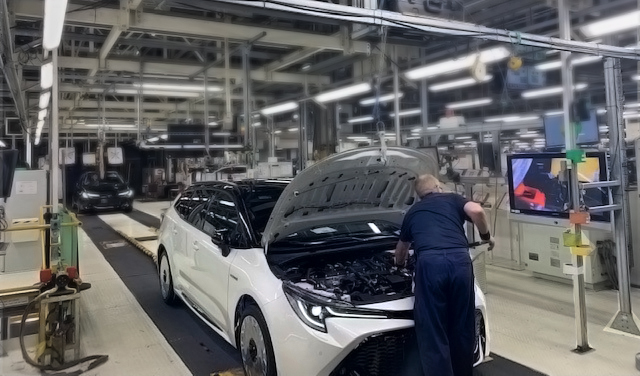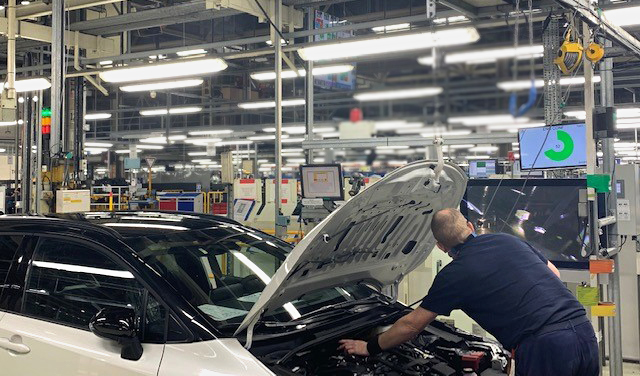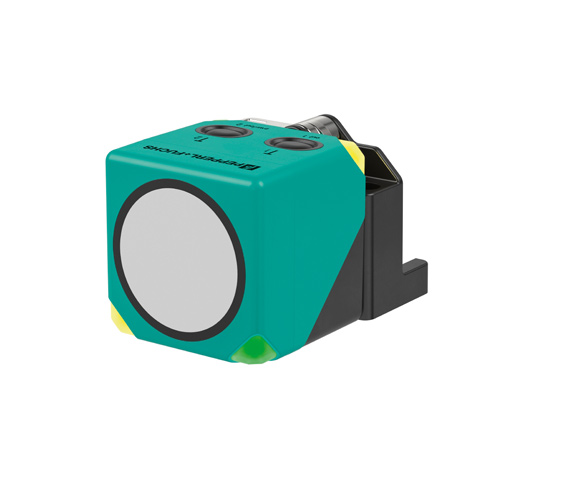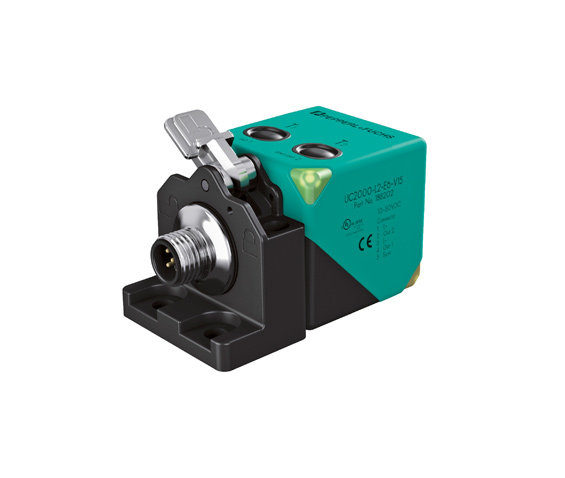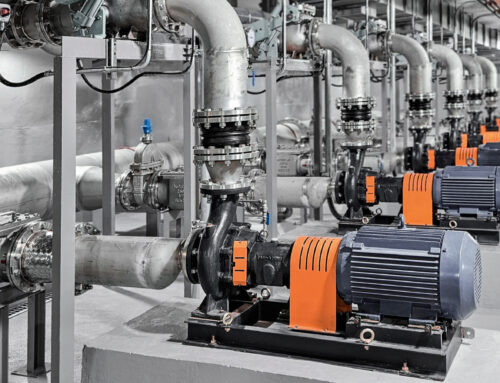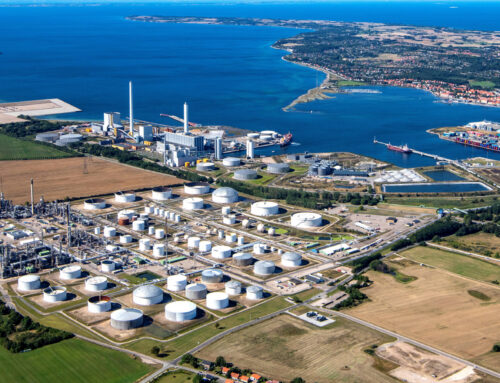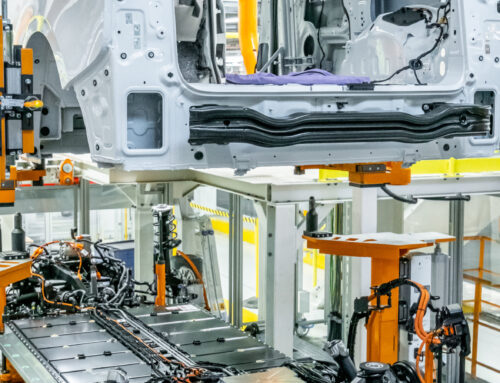February 17, 2021
Quality Assurance Using the Kaizen Principle
No company has shaped the Japanese philosophy of Kaizen—the quest for continuous improvement—more than Toyota. To this day, the Japanese automobile manufacturer focuses on the continuous optimization of its production and assembly processes worldwide. Pepperl+Fuchs ultrasonic sensors and AS-Interface network enable efficient quality assurance processes at Toyota Motor Manufacturing UK.
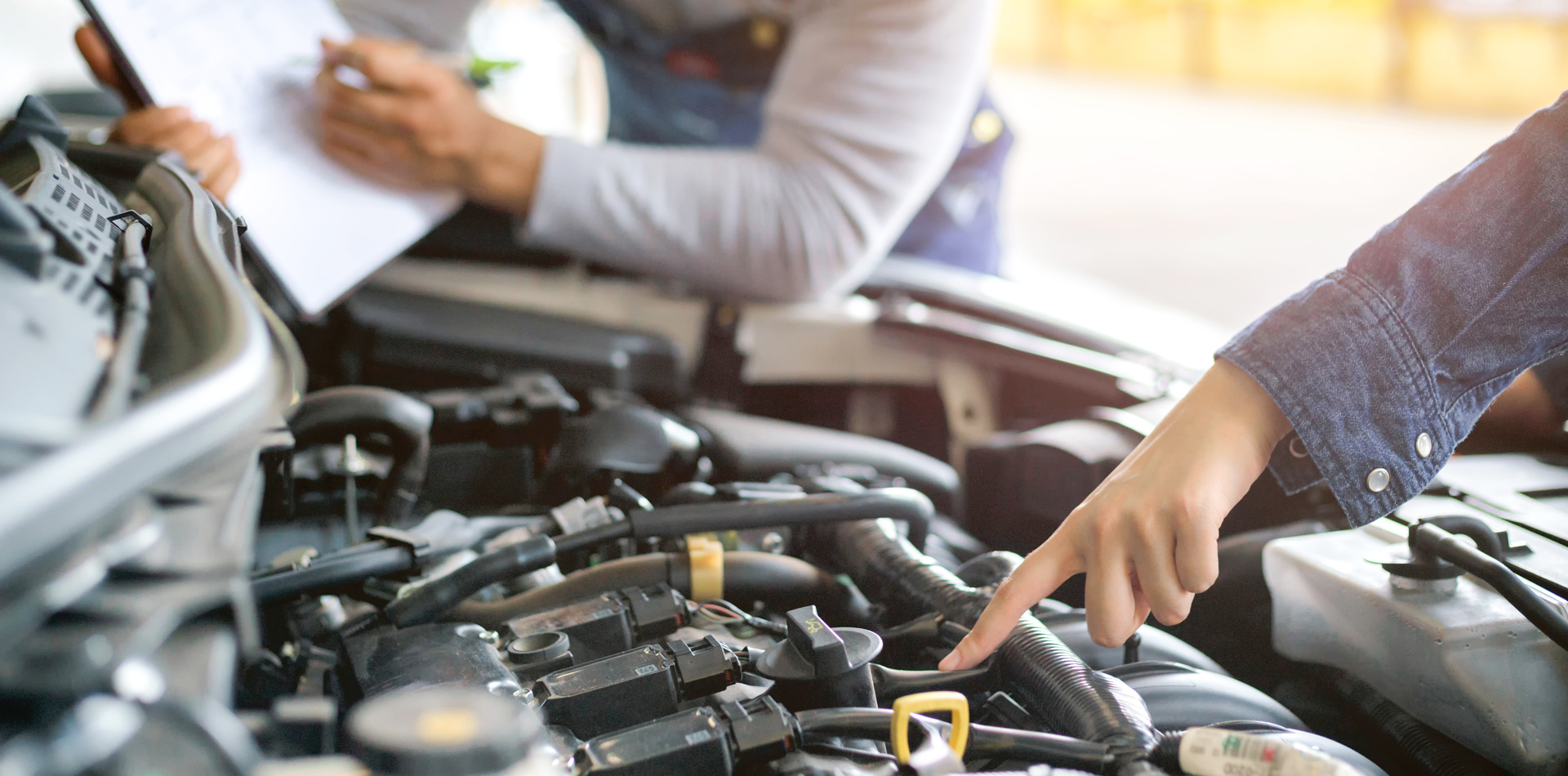
Some 10,000 parts have to be assembled before a vehicle can roll off the production line. Toyota Motor Manufacturing UK (TMUK) produces mainly hybrid powertrain vehicles and their manufacture involves a highly complex system of welding, screwing, joining, gluing, painting, and fine-tuning. Most steps in modern automotive factories are highly automated. The vehicles are produced along sophisticated and branched assembly lines 'on the conveyor belt'—even though these belts have in most cases been replaced these days with overhead conveyors, electric conveyor lines, and driverless transport systems. Yet, whether it is a belt or a line: The end result is the finished car rolling out of the factory.
On the Roller Test Bench
With a few litres of gasoline in the tank, the vehicle is transported from the assembly line to the quality assurance department. TMUK produces mainly hybrids but also traditional ICE vehicles in Burnaston near Derby, UK. The hybrid vehicles must have a charged battery for comprehensive functional inspection of the car, including the powertrains, to be carried out. A roller test bench is a place where the engine, transmission, and wheel housing are driven in all gears and at all speeds, the brakes are tested, numerous measurements are carried out, and the sensors installed in the vehicle are calibrated. Even though test benches boast a great deal of high-tech equipment, each test run is controlled by the quality teams' members.
"The vehicles come to us in defined cycles from the assembly line. Once testing is completed, we return them to a production line process for the final inspection," explains David Waters, Group Leader Quality Assurance at Toyota Motor Manufacturing UK. "Our processes depend very much on the individual tasks performed by each team member. We previously found that our work steps were at times out of sync with the automated processes. Sometimes too slow, sometimes too quick, which occasionally caused bottlenecks—the transitions between the process steps were not always as smooth as we wanted."
For quality assurance checks, the finished vehicles are initially divided onto two lines, each with four stations. The roller test bench is supplemented by other testing equipment, for example, a soundproof chamber for vibration testing. Another station checks whether the body is waterproof even in heavy rain. The quality assurance team relies on feedback on its operating speed to ensure optimal interlinking of processes. The Pepperl+Fuchs UC2000-L2 ultrasonic sensors form the basis for this. They are mounted at each station above the vehicle space and detect whether a vehicle is present or not.
Reliable Process Flows with Ultrasonic Sensors
'We used to work with optical sensors for similar purposes, but they were not ideal,' Waters recalls. 'They struggled to cope with some types of painted plastic and certain colours. The light from the neon tubes used for inspection would irritate the sensors, as did the panoramic glass roofs or reflections from specular surfaces.'
Ultrasonic sensors are not affected by such optical properties. Since the sensors use sound waves to detect objects, the colour, transparency, and reflection of a surface do not affect their function. Their measuring principle boasts other advantages: The sound cone—the cone-shaped measuring range—covers a larger area rather than a small point. This allows reliable detection even with irregular contours. The diameter of the sound cone can be adapted to the respective application.
With high reliability, the ultrasonic sensor reports whether a vehicle is in its measuring range or not. This information helps the quality assurance team to check the quality of its work immediately: A green-yellow-red signal lamp indicates whether the respective test procedure is still within the optimal time span or has already taken too long. Employees know where they are in their work at all times, and the department management team always has a comprehensive overview of processes and can counteract bottlenecks more quickly.

Pepperl+Fuchs UC2000-L2 ultrasonic sensors mounted at each station above the vehicle space detect whether a vehicle is present. A signal lamp indicates whether the respective test procedure is still within the optimal time span.
After reaching the last station, the vehicles are parked. Signal lights in this area indicate whether there is a free space in the left-hand or right-hand row to park the vehicle being tested. The signal colours of green and red are sufficient for this application. The spaces are continuously monitored by ultrasonic sensors from the VariKont series L2.
Network Formation During Operation
'Toyota had specified a rather important criterion when we were setting up presence monitoring,' recalls David Nield, Applications Development Manager at Pepperl+Fuchs UK. 'Installation should not interfere with ongoing operations and should preferably take place during work breaks. That was one of the reasons why we recommended an AS-Interface network.'
The AS-Interface system is a simple and cost-effective wiring technology for sensors and actuators. One of its advantages is that a single flat cable is sufficient to supply power and for data communication. Piercing technology is used for a connection. This technology makes installing new devices incredibly simple; since new devices can be easily attached to the flat cable using the piercing mandrels. For this reason, AS-Interface is unrivalled in generating decentralized I/O data in terms of cost, efficiency, and flexibility. The system can be integrated into all common control solutions with standardized data transfer.
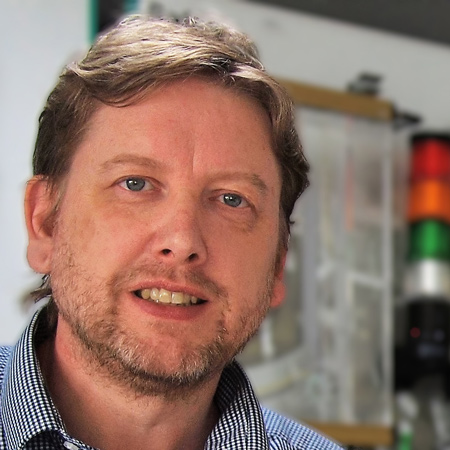
"Our management team was very impressed with the ease of use," explains Waters. "In the past, installing additional equipment was often a laborious process. Now we can easily connect additional devices. If necessary, we can expand the network and integrate other areas quite simply." To gain even more process information, the integration of inductive, photoelectric, or other ultrasonic sensors would be conceivable—with minimal installation effort required.
Data, Not Assumptions
To date, the AS-Interface network used by the quality assurance team has yet to be connected to higher-level control systems. This is actually a simple process, but Toyota would not be Toyota if there were no further optimization plans. Until then, the data generated by the sensors and collected in the network memory is periodically stored in packets and is available offline for analysis.
'If there are any delays in the processes somewhere, we can clearly identify the problem thanks to this information,' emphasizes the group leader. 'If it occurs in both shifts, is the delay ongoing or happening sporadically? Is it related to a specific station or rather to a specific car model? Instead of presumptions, we can now rely on factual data. We recognize the connections and can pinpoint our response. We previously had to contend with certain fluctuations, but today we are delighted to have an incredibly constant and seamless process. This, in turn, allowed us to improve overall performance and throughput measurably.'
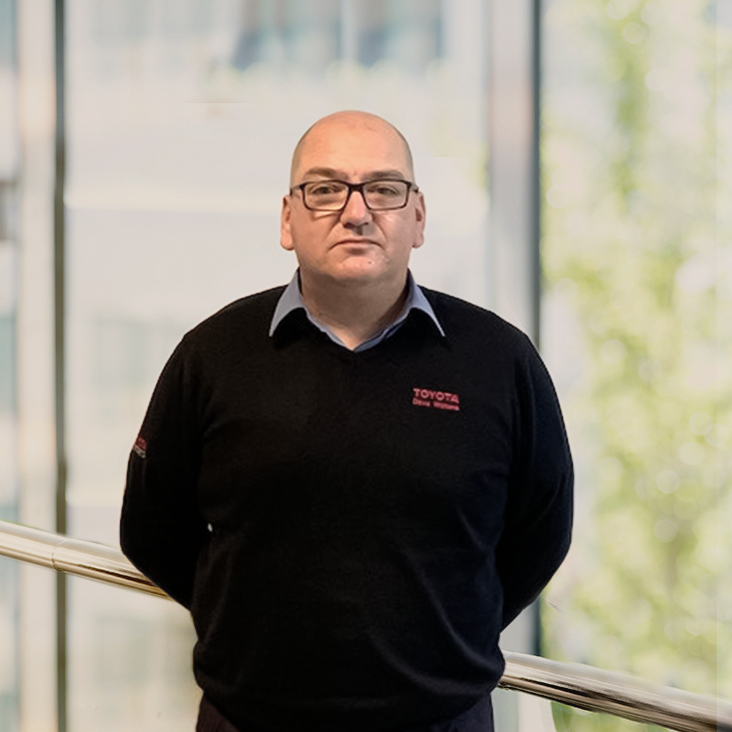
Pepperl+Fuchs supplied TMUK several years ago with a suitable solution using ultrasonic sensors for a similar monitoring task—however, there was no network at that time. "It made sense to call in the experts from Pepperl+Fuchs once again," says Waters. "The positive experiences from our previous partnership have been reinforced. We have received extensive and competent support in designing the AS-Interface network; the entire project ran as requested."
In the meantime, Waters' quality assurance team has presented the project in internal company forums. This is in line with the Japanese principle of Kaizen, which Toyota pursues as its global corporate philosophy.

